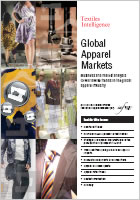Issue
3:
3rd Quarter 2008

Product Overview
Buy this Report now
Buy this Issue now
Subscribe
Download brochure (PDF)
Download price list (PDF)
Price list download
| Please choose your preferred currency:
|
Request sample issue
View list of reports
in other issues
|
Multi Report Package |
We also offer a flexible subscription product,
the Multi Report Package,
which allows you to select your own choice of reports from our full range,
to suit your own budget.
Click here for full details.
|
|
 |
Talking strategy: corporate social responsibility at Tommy Hilfiger |

5 pages,
published in Issue 3, 3rd Quarter 2008
Report price:
Euro 275.00;
US$ 365.00
|
Corporate social responsibility (CSR) covers a wide range of issues, including proper management of the environment, responsible employment of labour, health and safety in the workplace, sustainable business operations and appropriate involvement in social projects in local communities where company sites are located.
In the global apparel sector, CSR is a high level issue for all prominent players, particularly with respect to the environment and responsible labour practices. As a result, conscientious attitudes towards the environment are fast becoming instilled in the culture of many large clothing corporations. With regard to employment, and particularly child labour, the solutions are not as clear cut, however. Indeed, the fact that apparel manufacturing is, by nature, highly labour intensive means that production usually takes place in countries where there are plentiful supplies of low cost labour. Often, the cultural norm in these countries is for children to work from an early age instead of attending school?a concept which is difficult for consumers in the West to comprehend.
Thus, Western retailers who source from these countries will normally be faced with a dilemma. On the one hand, should a zero tolerance stance be taken regarding child labour?as is expected by most observers in the West? If so, this could cause the families to whom these children belong to be worse off than if the children were working.
Or, should retailers take a more pragmatic view and ensure that factories provide strict terms and conditions of employment for children?such as a reasonable minimum working age and pay, provision of educational facilities and lessons, and maximum shift length and total weekly hours?
|
 |
